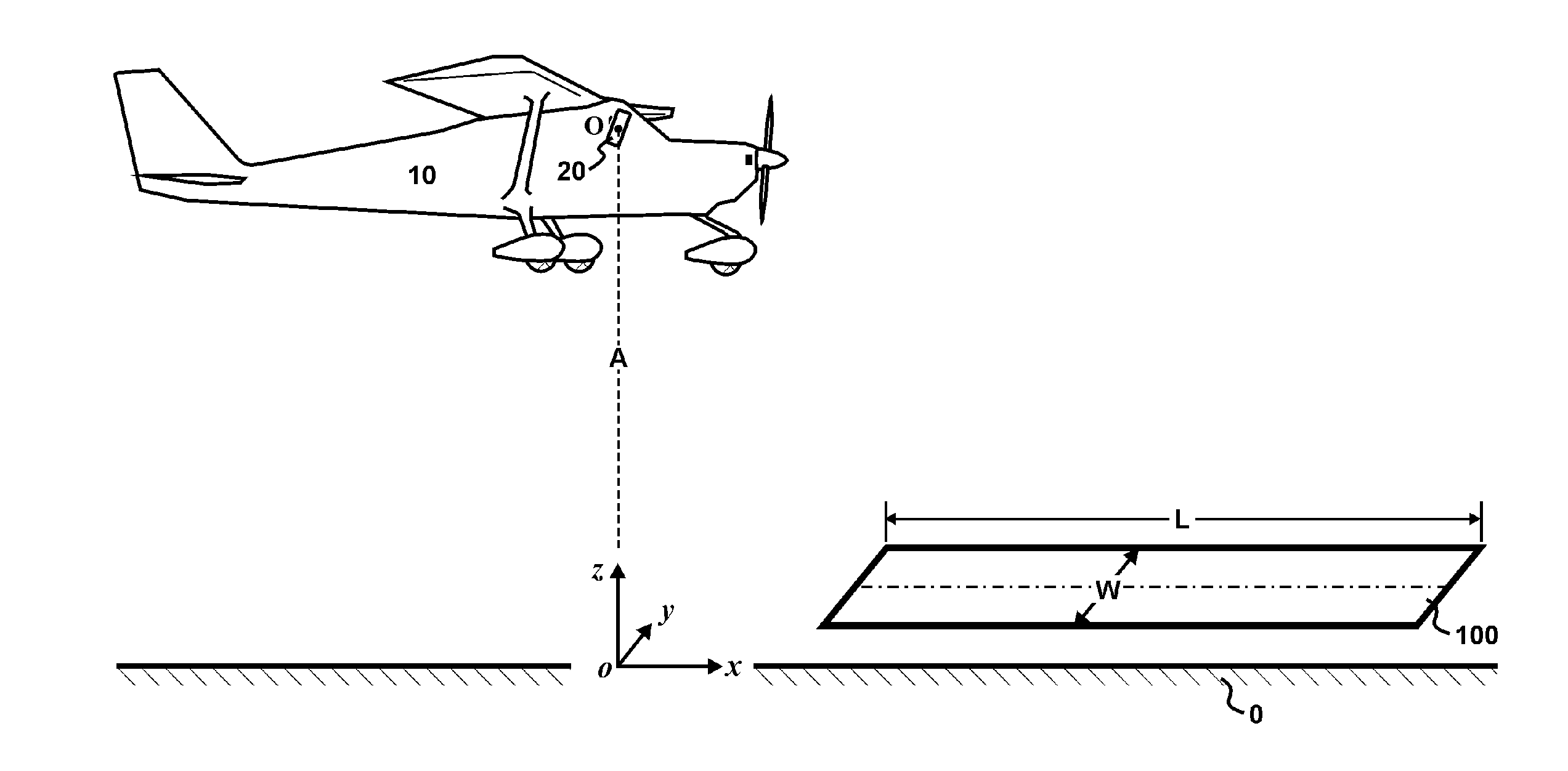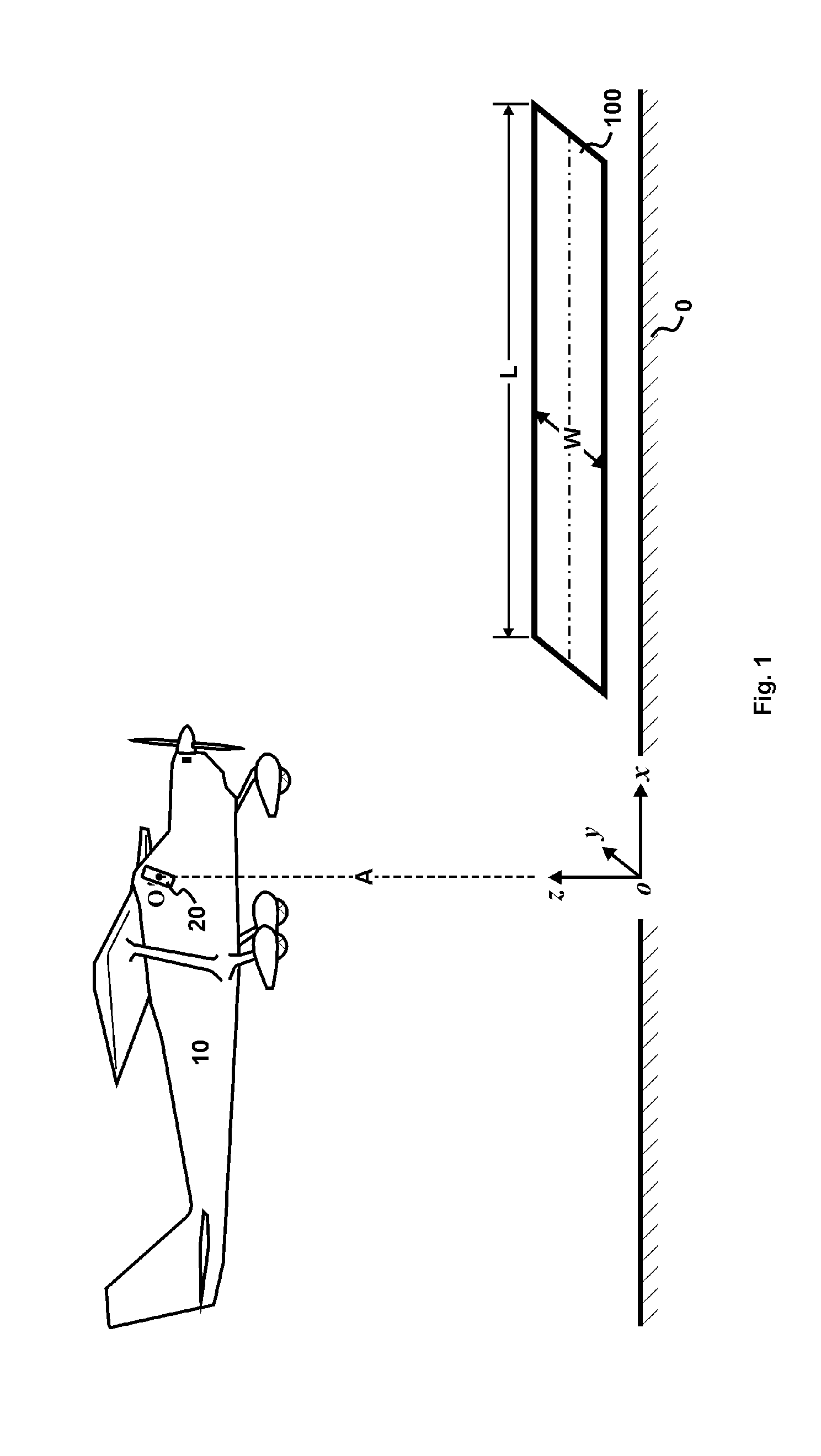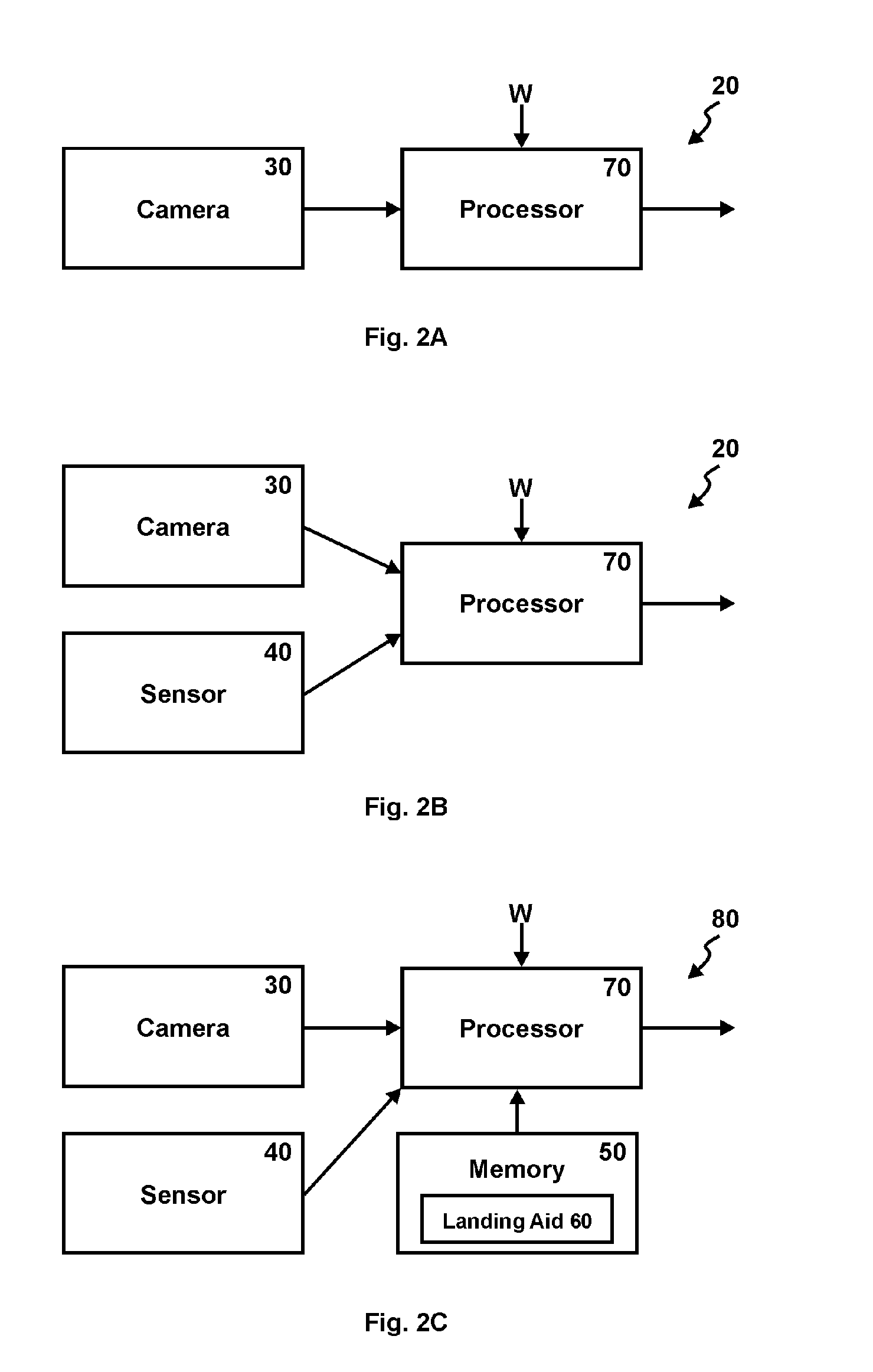Vision-Based Aircraft Landing Aid
- Summary
- Abstract
- Description
- Claims
- Application Information
AI Technical Summary
Benefits of technology
Problems solved by technology
Method used
Image
Examples
Embodiment Construction
[0023]Those of ordinary skills in the art will realize that the following description of the present invention is illustrative only and is not intended to be in any way limiting. Other embodiments of the invention will readily suggest themselves to such skilled persons from an examination of the within disclosure.
[0024]Referring now to FIG. 1, an aircraft 10 with a preferred vision-based landing aid 20 is disclosed. The vision-based landing aid 20 is mounted behind the wind-shield of the aircraft 10 and faces forward. It could be a camera, a computer-like device with camera function, or a cellular phone such as a smart-phone. The principal point of its optics is denoted O′. This landing aid 20 measures its altitude A to the ground 0 using computer vision. A runway 100 is located in the front on the ground 0. Its length is L and width is W. A ground frame is defined as follows: its origin o is the projection of O′ on the ground 0, its x axis is parallel to the longitudinal axis of th...
PUM
 Login to View More
Login to View More Abstract
Description
Claims
Application Information
 Login to View More
Login to View More - R&D
- Intellectual Property
- Life Sciences
- Materials
- Tech Scout
- Unparalleled Data Quality
- Higher Quality Content
- 60% Fewer Hallucinations
Browse by: Latest US Patents, China's latest patents, Technical Efficacy Thesaurus, Application Domain, Technology Topic, Popular Technical Reports.
© 2025 PatSnap. All rights reserved.Legal|Privacy policy|Modern Slavery Act Transparency Statement|Sitemap|About US| Contact US: help@patsnap.com



